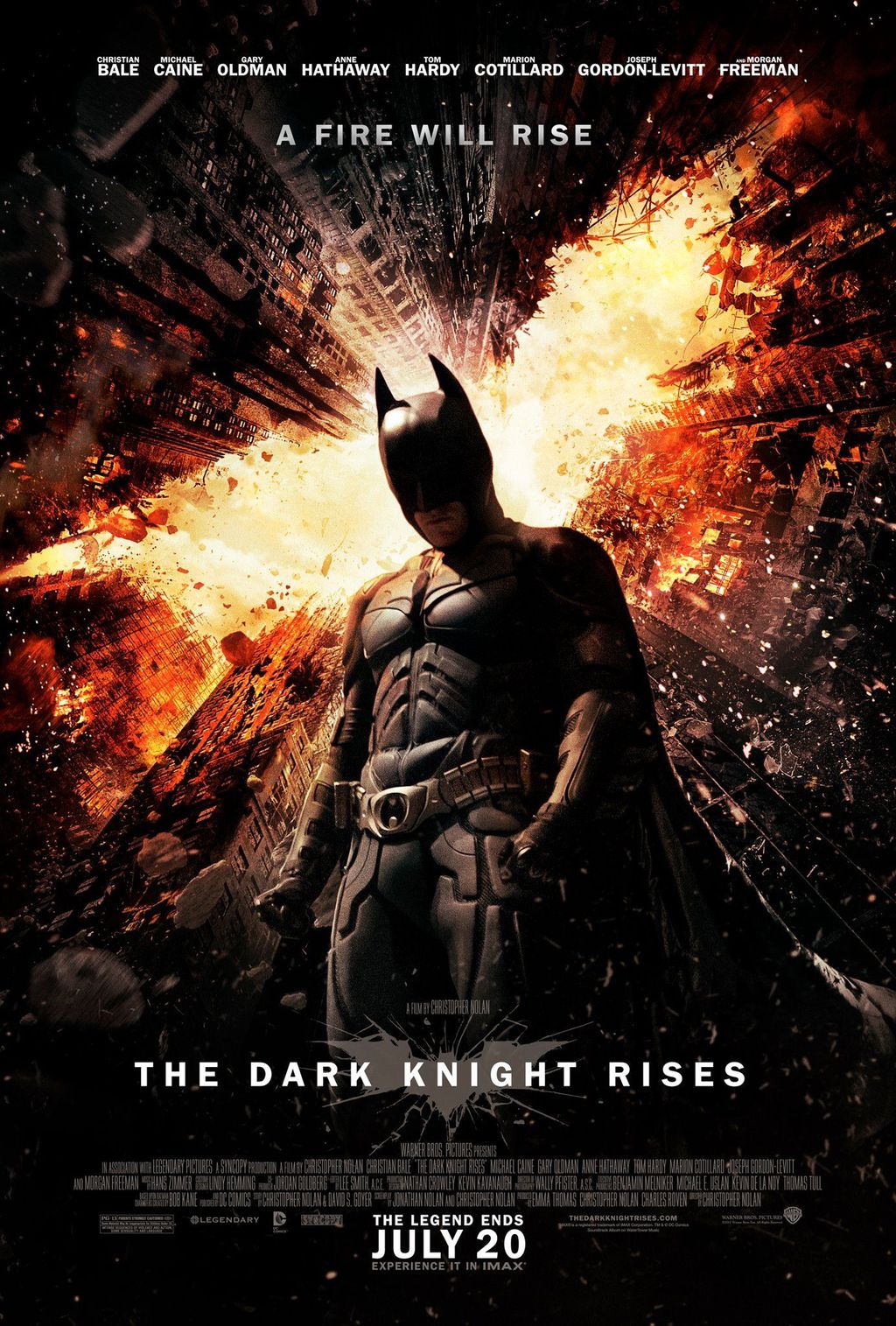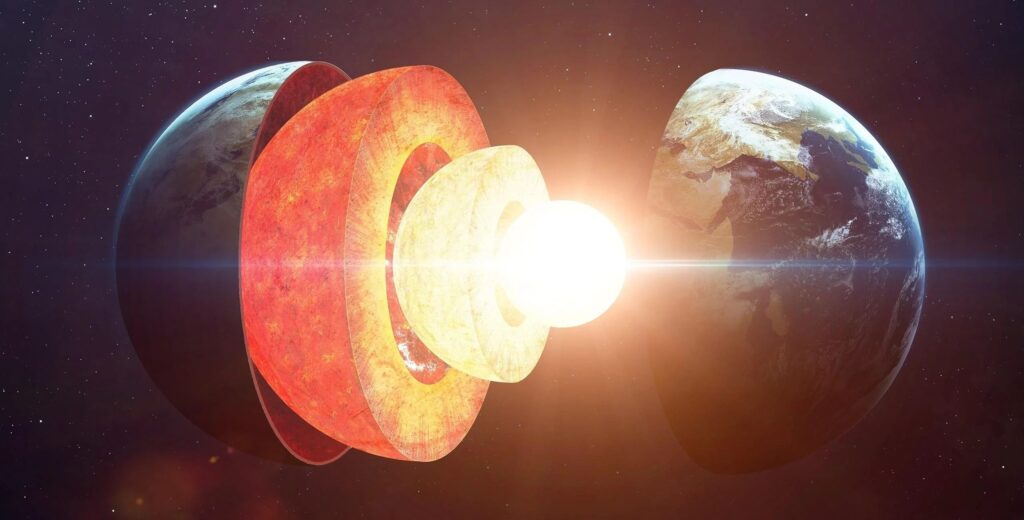
Movies have long captivated audiences, taking us on exhilarating journeys through time and space, often blurring the lines between what’s possible and what’s purely fantastical. While some films are celebrated for their meticulous scientific accuracy, many others are famously riddled with errors that defy logic and understanding, all in the name of a good story. It’s a delicate balance, where the pursuit of a gripping narrative sometimes overshadows the cold, hard facts of science.
Indeed, science fiction, superhero, and action movies are a thrill ride for any fan. They frequently bend the rules of science, and for the most part, that’s perfectly acceptable – up to a point. But when these exaggerations go too far, you simply can’t help but notice the truly bad science on display. From dinosaurs to global catastrophes and even the very fabric of our reality, some of our favorite films are packed with scientific inaccuracies that make you scratch your head.
Curious about what really should have happened? We’re embarking on a fascinating journey to break down the myths versus the science behind some of Hollywood’s most iconic, yet scientifically dubious, films. Get ready to dive deep into cinematic moments that provided unforgettable entertainment, even if they left actual scientists absolutely baffled. Here’s our take on seven of the most scientifically inaccurate movies ever made, presented in ScreenRant style, for all the entertainment enthusiasts out there.

1. Jurassic Park
Steven Spielberg’s classic sci-fi adventure, *Jurassic Park*, instantly transports us to an island where de-extinct dinosaurs roam free, thanks to the ingenuity of genetic scientists. It’s an incredibly entertaining franchise, filled with groundbreaking visuals and thrilling sequences. However, the very premise that allows these prehistoric giants to walk the Earth again is precisely what lands the film squarely in the “bad science in movies” category, much to the chagrin of geneticists worldwide.
For scientists in real life to recreate dinosaurs from preserved DNA, you would need a whole genome to replicate. The sobering reality, according to the BBC, is that scientists don’t have even a small amount of dinosaur DNA that has survived millions of years intact. DNA simply has an expiration date, and even if it’s trapped in amber, it cannot be used after 65 million years for the purposes laid out in the film. The idea of amber-coated mosquitoes containing dinosaur blood being a viable source is, frankly, far-fetched; liquid blood seldom exists in fossilized creatures, let alone in mosquitoes from 65 million years ago.
Furthermore, the film’s solution to incomplete DNA strands involves filling the gaps with frog DNA. However, mixing dinosaur DNA with that of a frog would either create a new species altogether or, more likely, nothing at all, rather than perfectly reconstructed dinosaurs in their original forms. The biological implications are significant, challenging the very notion of ‘resurrection’ as depicted. It’s a creative shortcut that prioritizes spectacle over biological plausibility.
Beyond the genetic wizardry, there are other noteworthy inaccuracies. For instance, the movie title uses ‘Jurassic,’ yet nearly all the dinosaurs featured in the film are actually from the Cretaceous period. Moreover, the scientific community now widely believes that real dinosaurs likely didn’t look like the scaly creatures shown in the film; modern paleontology suggests many were feathered, a stark contrast to the cinematic portrayal. While *Jurassic Park* offered a breath of fresh air in entertainment, it certainly piled up a series of factual errors that continued through its sequels.
Read more about: Were the Editors Asleep? 12 Jaw-Dropping Film Fails That Sneaked Onto the Big Screen, From Ancient Rome to a Galaxy Far, Far Away!

2. The Day After Tomorrow
Roland Emmerich’s *The Day After Tomorrow* delivers a truly frightening image of a frozen New York City, a stark visual that is hard to shake. This 2004 disaster movie plunges us into a new ice age triggered by global warming, leading to a series of catastrophic weather events. While it effectively raises awareness about climate issues, the science behind its dramatic premise is riddled with inaccuracies, oversimplifications, and outright embellishments that prioritize drama over data.
A major plot point revolves around the instantaneous cessation of the ocean current circulation, which is presented as the catalyst for the rapid climatic shift. While a 2018 study suggests that current circulation is indeed weak, the idea that such a change could happen instantly is highly unlikely, bordering on impossible. Climate scientists emphasize that major shifts in global climate systems occur over decades, centuries, or even millennia, not within a matter of hours or days as depicted in the film.
Another glaring issue is the speed at which temperatures drop. The National Center for Atmospheric Research informed NBC that while temperatures could indeed drop in parts of the world due to climate shifts, it would take decades for such a significant change to occur. The film’s portrayal of temperatures plummeting by one degree per second to reach absolute zero within minutes is astonishingly unbelievable and physically impossible. Such an extreme and rapid drop defies the laws of thermodynamics and atmospheric physics.
Furthermore, the movie depicts a tsunami hitting Manhattan and then instantly freezing. If a tsunami of that magnitude did strike, and then froze so rapidly, the sheer expansion of ice during the freezing process would likely tear the buildings apart, a detail entirely absent from the cinematic depiction. The film embellishes how dramatically and quickly these changes occur, undoubtedly making for good entertainment, but at the expense of sound scientific credibility. Despite its breathtaking CGI and intense performances, *The Day After Tomorrow* ultimately fails miserably on its scientific premise.
Read more about: This Is How You Live Your Best Life for a Century (Or More!): 14 Celebs Who Rocked Their 90s & 100s Like Absolute Legends!

3. Armageddon
In Michael Bay’s epic disaster film, *Armageddon*, Bruce Willis heroically saves the Earth from an asteroid “the size of Texas” on a collision course with our planet. His plan? Landing on the asteroid’s surface, drilling a massive hole, and detonating a hydrogen bomb at its core to split it into two pieces, ensuring they float harmlessly past Earth. This premise, while incredibly thrilling, is a veritable smorgasbord of scientific inaccuracies that has become legendary among critics and even NASA.
Experts widely agree that the science behind this heroic act simply doesn’t add up. A group of physics students in the U.K. calculated that for such a plan to work, the bomb would need to be a billion times stronger than the biggest bomb ever detonated on Earth. Even if such an explosive existed, the idea that a “Texas-sized” asteroid could go undetected until less than 20 days before impact is nearly zero. Teams of astrophysicists constantly monitor objects of certain sizes that come within 100 million miles of Earth’s orbit, making such a late discovery practically impossible.
Moreover, the film presents numerous other baffling scientific blunders. Scenes depict burning fires after aircraft crash-land in space, which is purely ridiculous, as there’s no oxygen in space to fuel a conventional flame. The banking of spaceships and the behavior of debris leaving an asteroid with almost zero gravity are also inconsistent with actual physics. NASA itself reportedly screens *Armageddon* during new recruit training, challenging them to spot all 168 heinous mistakes, making it a “laughing stock of scientifically inaccurate movies” despite its decent cast and box office success.
Indeed, the concept of simply drilling 800 feet into such a massive rock and splitting it with a nuclear device is a significant oversimplification of complex astrophysics. If an asteroid of that magnitude were truly on a collision course, everything on Earth would be vaporized within minutes upon impact. The film prioritizes an action-packed narrative, completely disregarding the fundamental laws of physics and astronomy in its pursuit of a grand, improbable rescue mission.
Read more about: Rewatch Alert! The Seriously Dumb Things We All Totally Overlooked in Our Favorite ’90s Movies

4. I Am Legend
*I Am Legend* presents a post-apocalyptic world where Will Smith’s character, Robert Neville, is seemingly the last human survivor in New York City, desperately working to develop a vaccine to cure people of a devastating virus that wiped out humankind. The film explores themes of isolation and humanity’s fight for survival against hordes of infected beings. While gripping, the scientific underpinnings of the virus and vaccine development contain significant inaccuracies that stretch the bounds of biological reality.
One of the central scientific issues in the film revolves around the nature of the virus itself. The narrative suggests that the virus mutates, changing from one type of infectious agent to another and becoming airborne. In reality, viruses, while capable of mutation, do not fundamentally change from one *type* of virus to another in the way depicted. They can evolve, certainly, but a complete transformation in their fundamental classification or mode of action is a profound misrepresentation of virology. This dramatic mutation serves the plot by enhancing the threat, but it deviates significantly from known scientific principles.
Another critical inaccuracy concerns Neville’s efforts to create a vaccine. The film implies that because Neville is immune, his blood can directly help him create a vaccine. This misunderstanding overlooks the complex process of vaccine development. Vaccines don’t simply emerge from the immune blood of a survivor. Instead, they function by training the immune system to recognize pathogens, typically by introducing attenuated (weakened) forms or traces of the virus to the body, thereby eliciting an immune response without causing the disease. Neville’s ability to swiftly synthesize a cure from his own blood is a dramatic convenience rather than a reflection of actual immunological science.
Furthermore, the infected people in the film spread the disease primarily by biting others, a common trope in zombie-apocalypse narratives. While this creates a visually terrifying threat, it’s combined with the airborne mutation to create a rapidly spreading, biologically inconsistent pandemic. The film’s compelling story and Will Smith’s powerful performance often overshadow these scientific liberties, but for those with a biological background, these details can be a significant point of contention.
Read more about: 14 Luxury Cars Quietly Going Out of Style: An In-Depth Look at Automotive Evolution

5. Indiana Jones and the Kingdom of the Crystal Skull
The *Indiana Jones* movie franchise is celebrated for its thrilling adventures and iconic hero. However, *Indiana Jones and the Kingdom of the Crystal Skull* features a scene so infamous for its scientific absurdity that it spawned its own colloquialism: “nuking the fridge.” This memorable, yet ridiculous, moment occurs when Indy, to survive a nuclear explosion, hides inside an old refrigerator. Astonishingly, the blast throws the refrigerator through the air, yet Indiana walks out completely in one piece.
In short, this is a prime example of egregious bad science in movies because, quite simply, you probably cannot survive a nuclear bomb blast by hiding in an old fridge. While a lead-lined refrigerator might offer some minimal, temporary radiation protection to a very limited extent, it is absolutely not blast-proof. The immense kinetic energy and heat generated by a nuclear detonation would obliterate an ordinary refrigerator, along with anyone inside it. The idea that a household appliance could withstand such forces is pure fantasy, making a mockery of physics and human fragility in the face of such power.
Adding to the improbability, the scene depicts Indy’s fridge tumbling end over end down a steep slope after the explosion. Even if the refrigerator somehow remained structurally intact, the violent, uncontrolled motion and impact forces from such a fall would have undoubtedly broken multiple bones in any human occupant, if not caused fatal internal injuries. Yet, our hero emerges relatively unscathed, ready for his next adventure.
The scene’s ridiculousness gained such notoriety that, for a time, the phrase “nuking the fridge” actually replaced “jumping the shark” as the go-to idiom for a moment when a series or franchise declines into outlandish and implausible plot developments. This cinematic choice underlines how some films prioritize a quick, shocking survival moment over any semblance of scientific realism, relying entirely on suspension of disbelief to carry the narrative forward. It’s the daily-life equivalent of seeking shelter under an umbrella to escape raining lava, an utterly non-starter concept.
Read more about: From Big Screen Brawls to TV Triumphs: 15 Legendary Harley-Davidsons That Conquered Hollywood

6. Lucy
Luc Besson’s *Lucy* centers on a woman forced by gangsters to smuggle drugs in her stomach. When the bag breaks, the drugs enter her system, somehow granting Lucy access to and utilization of the mythical 90% of her brain that most people reportedly never use. This newfound access to more brainpower essentially makes her superhuman, bestowing her with extraordinary cognitive and physical abilities. The core premise, however, relies entirely on one of the most persistent and debunked myths in neuroscience.
The notion that humans only use 10% of their brain is a pervasive urban legend, yet it has been invalidated many times by renowned scholars and neuroscientists. In reality, people use virtually every part of their brain, and most of the brain is active all the time, albeit in varying degrees depending on the task. Brain scans and studies consistently show widespread activity across different brain regions, even during rest or simple activities. No part of the brain lies dormant waiting to be “unlocked” for superhuman capabilities.
Consequently, the idea that a powerful synthetic drug could somehow enable a person to access a higher percentage of their brain and thereby acquire superpowers is scientifically outrageous. While drugs can certainly alter brain chemistry and function, they cannot magically unlock latent cognitive potential that doesn’t exist. The film takes an already false premise and extrapolates it into fantastical abilities like telekinesis, instant learning, and control over matter, all presented as a direct consequence of this increased brain usage.
Despite its scientific flaws, *Lucy* offers a thrilling, fast-paced exploration of potential human capabilities and philosophical queries about the mind’s limits. Scarlett Johansson’s captivating performance and some well-executed action sequences might make the film enjoyable for many viewers. However, from a scientific standpoint, the central concept is a foundational error, relying on a myth that has long been disproven within the scientific community.
Read more about: From Reality Stardom to Silver Screen Success: 15 Stars Who Conquered Hollywood Acting

7. The Matrix
*The Matrix*, a groundbreaking film that redefined science fiction cinema, captivated audiences with its deep philosophical themes and revolutionary visual effects. Its premise—that humanity is unknowingly trapped in a simulated reality created by sentient machines—is thought-provoking. However, one specific element of this dystopian future, the concept of humans being used as biological batteries to power the machines, presents a significant scientific inaccuracy that has been widely debated.
The film depicts vast fields of human beings suspended in pods, their bodies generating bioelectricity that serves as an energy source for their machine overlords. The iconic scene where Morpheus explains, “The human body generates more bioelectricity than a 120-volt battery and over 25,000 BTUs of body heat,” aims to justify this system. However, in reality, people simply don’t need to worry about turning into human batteries to power machines, as the energy economics of such a system are fundamentally flawed.
Even a human body at rest requires a decent amount of energy—calories from food—just to maintain its basic biological functions, such as metabolism, warmth, and organ operation. The amount of energy that the machines would be able to extract from a human body is actually very little compared with how much energy it would take to keep that human alive, fed, and maintained within the pods. It would be a net energy loss for the machines, making it an incredibly inefficient and unsustainable power source. A much simpler and more effective solution for energy generation would be alternative sources like solar, geothermal, or nuclear power.
The Wachowskis themselves later acknowledged that the “human battery” concept was a studio-mandated change, as their original idea of humans being used as processing power was deemed too complex. While *The Matrix* excels in its narrative complexity, action, and philosophical depth, this particular scientific detail serves as a reminder that sometimes, cinematic vision takes precedence over scientific plausibility. It’s a key element of the film’s lore that, under scientific scrutiny, simply doesn’t hold up to basic physics and energy conservation principles.
Our journey through Hollywood’s most glaring scientific inconsistencies has only just begun. The allure of the big screen often demands a certain creative license, stretching what we know about the universe to create unforgettable stories. Yet, it’s precisely these departures from scientific reality that also offer us a unique lens through which to appreciate both the magic of cinema and the astounding complexity of the world around us. Stay tuned as we continue our exploration into more films that defied scientific logic for the sake of captivating entertainment.”
Our journey through Hollywood’s most glaring scientific inconsistencies has only just begun. The allure of the big screen often demands a certain creative license, stretching what we know about the universe to create unforgettable stories. Yet, it’s precisely these departures from scientific reality that also offer us a unique lens through which to appreciate both the magic of cinema and the astounding complexity of the world around us. Stay tuned as we continue our exploration into more films that defied scientific logic for the sake of captivating entertainment.
Read more about: From Stardom to Screens: How 12 Viral Moments Reshape Public Perception Forever

8. The Dark Knight Rises
Christopher Nolan’s *The Dark Knight Rises* brought a powerful conclusion to his Batman trilogy, immersing audiences in a Gotham City on the brink of nuclear annihilation. As Batman heroically flies a nuclear explosive away from the city, the film delivers a thrilling spectacle. However, this climactic act, while visually stunning, hinges on a scientific premise that left many experts scratching their heads.
A central point for scientists is Bane’s directive to a brilliant physicist: to re-craft a reactor into an atomic weapon. This concept, according to real-world scientists, is simply impossible and frankly ridiculous. Transforming a functional reactor into a deployable atomic weapon involves a fundamental misunderstanding of nuclear physics and engineering.
The sophisticated science behind nuclear weapons requires specific fissile materials, intricate designs, and precise conditions far beyond what a repurposed reactor could achieve. This cinematic shortcut serves the plot’s urgent timeline but bypasses the formidable scientific and technological hurdles involved, marking a significant departure from reality for dramatic tension.
Read more about: Beyond the Box: 15 Frozen Food Game-Changers That Taste Better Than Homemade, According to Culinary Experts

9. Gravity
Alfonso Cuarón’s *Gravity* wowed audiences with its breathtaking visuals and intense portrayal of astronauts stranded in space, earning critical acclaim. Yet, beneath the stunning cinematography, numerous scientific inaccuracies were pointed out by experts, questioning the film’s adherence to the harsh realities of space. The Washington Post, among others, highlighted several key issues.
One major point involves the physical effects of space exposure. The film depicts bodies freezing instantly in vacuum, and tears conveniently floating off. In reality, exposure to space would not cause instantaneous freezing due to the vacuum’s insulating properties, and tears would likely cling to the face due to surface tension in zero gravity. These dramatic flourishes enhance the visual experience but diverge from actual physics.
Furthermore, *Gravity* takes considerable liberties with orbital dynamics. It shows various space stations and satellites conveniently located close, allowing Dr. Ryan Stone to easily maneuver between them. In truth, these objects orbit miles apart, making such quick traversal physically impossible without massive amounts of fuel and time. The ease with which characters “point at an object and go toward it” simplifies complex orbital mechanics.
Even the film’s emotionally charged ending was debated by astronauts. George Clooney’s character, Matt Kowalski, detaches himself to save Dr. Stone, portrayed as a necessary sacrifice. However, some astronauts suggested that in a true zero-gravity scenario, Kowalski would more likely have floated there, maintaining a connection to Stone, rather than drifting off. These details, though minor to the average viewer, show a depiction of space that often strays from scientific fact.
Read more about: Beyond the Limelight: 13 Iconic ’60s Movie Stars Who Captured Hearts, Then Vanished from Hollywood

10. Independence Day
Roland Emmerich’s *Independence Day* became a definitive alien invasion blockbuster, thrilling audiences with its massive scale and iconic speeches, celebrating human resilience. For all its entertainment value, the film takes significant liberties with technological and scientific logic, particularly regarding how humanity defeats a vastly superior alien force.
One glaring scientific stretch involves David Levinson’s ability to create a computer virus capable of disabling the alien mothership’s advanced systems. Crafting a virus affecting disparate human operating systems is challenging; doing so for unknown alien technology, with only minutes of exposure, is an enormous leap of faith. The notion that alien ships would feature “compatible USB ports” for such a hack highlights the film’s prioritization of plot convenience.
Moreover, Levinson, a satellite technician, somehow deciphers complex alien technology and pilots an alien spacecraft with virtually no prior training. Real-world experts spend decades studying and reverse-engineering foreign technology. This rapid comprehension and adaptation, while essential for the film’s pacing, showcases an unrealistic acceleration of technological understanding.
Despite these scientific contrivances, *Independence Day* remains a beloved classic for its exhilarating action and celebration of human spirit. Its creative freedom in technological depiction, though scientifically unsound, ultimately serves its larger purpose: to deliver a compelling story of humanity’s triumph against impossible odds, proving that sometimes, a good story can override scientific rigor.
Read more about: Beyond the Bling: 10 Celebrities Who Married Into Mega-Wealth and Sparked ‘Gold Digger’ Rumors

11. After Earth
*After Earth*, starring Will Smith and Jaden Smith, presented a cautionary tale of a futuristic Earth, abandoned by humanity and evolved into a hostile world. The premise, where a father and son crash-land a millennium after humans fled, sets up a unique survival challenge. However, the film’s depiction of Earth’s evolution and new ecosystem contains baffling scientific contradictions.
One significant scientific flaw lies in the planet’s contradictory behavior. The film suggests Earth became so hostile humans couldn’t breathe its atmosphere, yet a millennium later, it becomes welcoming to vibrant wildlife and flora. This rapid, selective environmental shift, hospitable for diverse life forms but deadly to humans, lacks credible biological explanation. Furthermore, a well-vegetated planet where everything mysteriously freezes over every night is inherently baffling.
Adding to the improbability is the idea that all life on this evolved Earth specifically adapted to kill humans, even though humans had been absent for a thousand years. Animals never encountering humans would have no evolutionary pressure for such specific hostility. This anthropocentric view suggests a conscious design by the planet to target its former inhabitants, rather than a natural, undirected process.
The film’s lack of scientific rigor extends even to the “Ursa” creatures, genetically engineered weapons depicted as blind but able to “smell” fear. This concept, along with the planet’s rapid, targeted evolution, points to a narrative prioritizing dramatic tension over biological consistency. *After Earth*, despite its ambition, becomes a “hot mess” of scientific inconsistencies, failing to ground its fantastical elements in believable ecological principles.
Read more about: Beyond the Limelight: 13 Iconic ’60s Movie Stars Who Captured Hearts, Then Vanished from Hollywood

12. San Andreas
*San Andreas* plunges audiences into a catastrophic earthquake scenario, with Dwayne “The Rock” Johnson battling immense destruction as California is torn apart by the titular fault line. While aiming for high-octane disaster entertainment, the film takes enormous creative liberties with seismology and geology, presenting an exaggerated and scientifically inaccurate portrayal of natural disasters.
The movie’s core premise revolves around a recently detected “San Andreas Fault” capable of leveling both Los Angeles and San Francisco with a massive magnitude 7 earthquake. However, geologists confirm that the San Andreas Fault is well-known and constantly monitored. More crucially, a magnitude 7 earthquake, while significant, simply would not cause the widespread, city-leveling devastation depicted. The scale of destruction shown, complete with massive fissures swallowing buildings, is a gross exaggeration.
Adding to the geological implausibilities, *San Andreas* features colossal tsunamis triggered by inland fault movements. In reality, tsunamis are predominantly caused by fault lines under the oceans, where large vertical displacements of the seafloor displace immense water volumes. An earthquake on an onshore fault like the San Andreas, which involves horizontal slippage, would not generate the devastating tsunamis shown. The film conveniently neglects to clarify the actual oceanic origins needed for such waves.
Read more about: America’s Ultimate Sandwich Showdown: 15 Top Picks for Unbeatable Ingredient Freshness

13. World War Z
*World War Z* offered a unique take on the zombie apocalypse, with Brad Pitt’s Gerry Lane racing against time to find a cure amidst a global pandemic. The film’s fast-paced action and terrifying hordes of “infected” captivated viewers. However, the scientific underpinnings of the zombie virus, its transmission, and human physiological responses contain numerous inaccuracies that deviate significantly from known biology and virology.
One of the most widely cited scientific issues is the incredible speed at which the virus infects and transforms victims. The film depicts individuals turning into aggressive, fast-moving zombies within a mere 12 seconds of being bitten. In reality, human blood circulation takes more than 12 seconds, let alone for a virus to replicate and induce such a profound transformation. This instantaneous effect is a dramatic convention, defying actual pathological timelines.
Furthermore, Gerry’s ingenious, yet scientifically dubious, plan to achieve “camouflage” from the zombies involves injecting himself with deadly but curable pathogens. The idea is these pathogens would make him appear “unhealthy” to the zombies, causing them to ignore him. This concept is entirely “out of whack,” as critics described. There’s no biological basis for zombies to distinguish between pathogens in such a nuanced way, nor for injecting oneself with a dangerous disease to create a specific marker an undead horde would avoid.
The very concept of a zombie, as depicted in *World War Z*, is itself “riddled with mysteries and scientific dismissals” in the real world. While the film delivers a compelling and intense cinematic experience, its narrative relies heavily on these physiological and biological inaccuracies to create its unique brand of undead terror.
Read more about: 14 Luxury Cars Quietly Going Out of Style: An In-Depth Look at Automotive Evolution

14. The Core
*The Core* sends a team of scientists on an audacious mission to Earth’s center to restart its magnetic field, threatening global catastrophe. While an intriguing premise, this film stands out as one of the most scientifically inaccurate movies ever made, piling up implausibilities concerning geology, physics, and basic energy conservation. It’s a veritable masterclass in fictional science, as critics and scientists alike pointed out its egregious errors.
The film’s central conceit, that the Earth’s external core has stopped rotating and can be jump-started with a 1000-megaton nuclear bomb, is profoundly unscientific. Geologists and physicists confirm the external core’s rotation is a continuous, fundamental process, not something that can simply cease and be restarted. Comparing the effect of a nuclear bomb on the core’s rotation to “creating substantial waves in a lake with a small rock” barely scratches the surface of its absurdity.
Moreover, the technology depicted for the journey to the core defies every known law of physics. The “high-endurance ship” that tunnels thousands of miles into the Earth’s crust is presented as capable of withstanding unimaginable pressures and temperatures without realistic explanation. Even if such a ship could exist, the film’s portrayal of radio contact deep within the Earth and the ability to “walk outside of their ship” in such extreme conditions is pure fantasy, ignoring realities of heat, pressure, and electromagnetic interference.
Beyond the core mission, the film introduces tangential scientific blunders, such as microwaves causing “severe damage” worldwide, far beyond their actual capabilities. *The Core* begins with a promising concept but quickly devolves into a “poorly executed script” from a scientific perspective, sacrificing plausibility for dramatic effect. It serves as a stark reminder of how Hollywood can take a fascinating scientific idea and stretch it to breaking point, becoming a “laughing stock” among inaccurate films.
Read more about: 14 Luxury Cars Quietly Going Out of Style: An In-Depth Look at Automotive Evolution
Our deep dive into Hollywood’s most scientifically baffling blockbusters highlights the delicate dance between creative storytelling and factual accuracy. While these films have undoubtedly provided us with unforgettable cinematic moments and sparked our imaginations, they also serve as fascinating case studies in how far science can be stretched for entertainment. It’s a joyful reminder that sometimes, the magic of movies lies not in their perfect adherence to scientific principles, but in their boundless capacity to transport us to worlds where anything, even the scientifically improbable, can feel breathtakingly real. As fans, we often embrace the fantasy, but a little peek behind the curtain at the science “goofs” only adds another layer of appreciation for both the art and the incredible complexity of the universe we actually inhabit.



